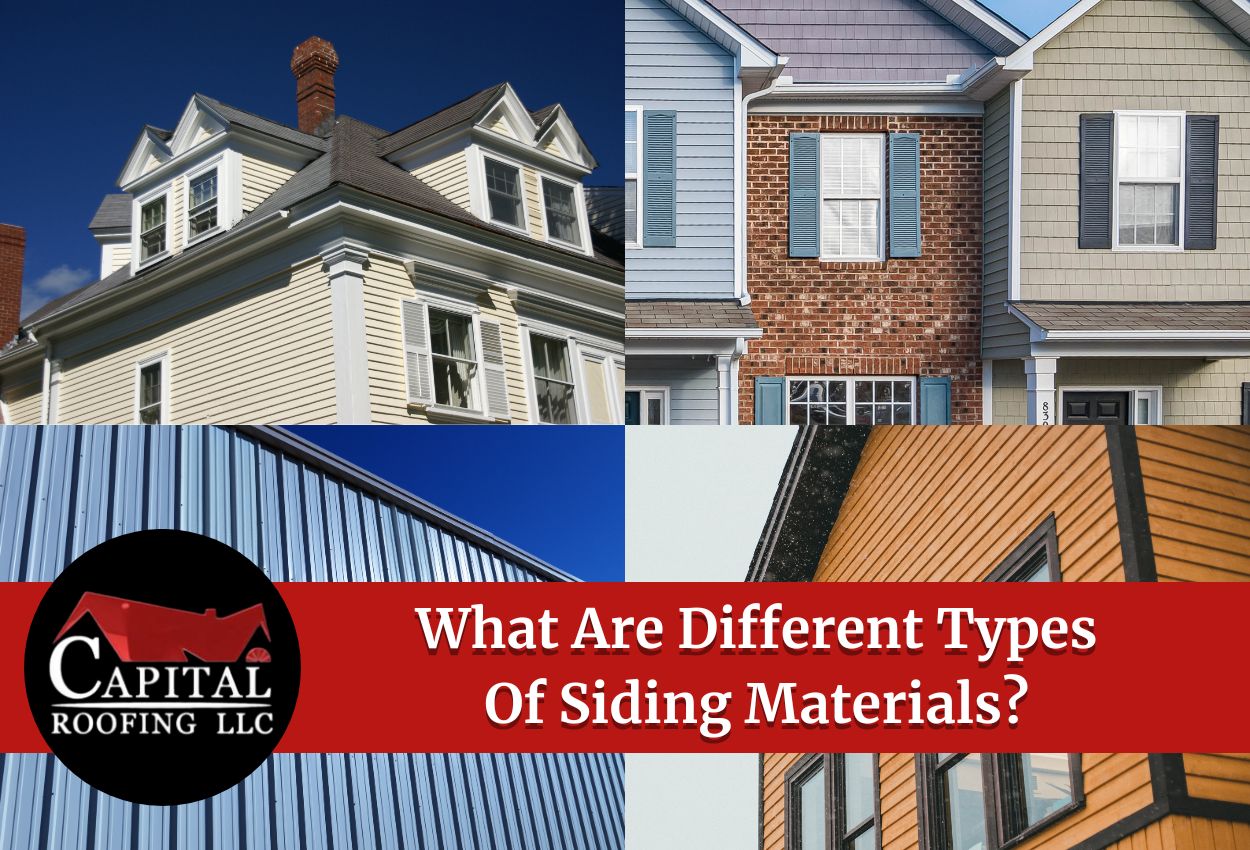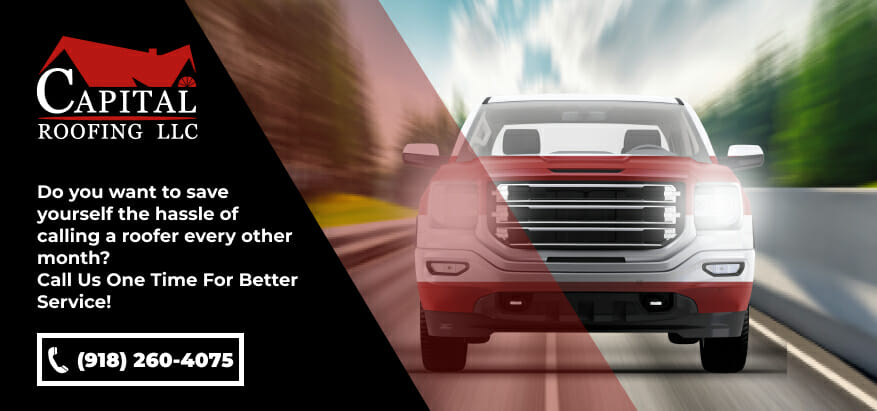We all know that choosing the right siding for your property is very important. However, with so many options available on the market, you might not know which is the best type of siding for your home.
At Capital Roofing, we are your local roofing and siding professionals serving Claremore and the surrounding areas of Oklahoma. In today’s article, we will go over common types of siding in detail.
Understanding the suitability and limitations of each option can help you make a final decision for your property.
To discuss your project with our professionals, feel free to give us a call today at (918) 260-4075.
#1 Vinyl Siding

Vinyl siding is one of the most popular types of siding for homes in the U.S., and for good reason. Made from PVC resin, this type of siding has a nice balance of affordability and durability.
What Are The Pros Of Vinyl Siding?
Vinyl siding comes in many different colors, allowing you to easily match your home’s style. Modern manufacturing techniques have even allowed vinyl to replicate the texture and appearance of wood without the maintenance requirements of the natural material.
Also, there are insulated vinyl siding options that you can choose from for your Claremore property, which helps keep your home cool during the hot and dry summers.
Installing vinyl siding is relatively straightforward compared to other materials. The panels are designed to attach to your home’s exterior walls using nails or special clips, making them a good option for professional and DIY installations.
Also, most vinyl siding types only need simple cleaning with soap and water to maintain their appearance, making it perfect for busy homeowners.
What Are The Cons Of Vinyl Siding?
While vinyl provides many advantages, it does have some limitations. In harsh weather conditions, vinyl can crack, especially in very cold temperatures.
When damaged, you may need to replace entire panels rather than just repairing a small section. Vinyl siding can also fade over time when exposed to intense sunlight.
#2 Wood Siding
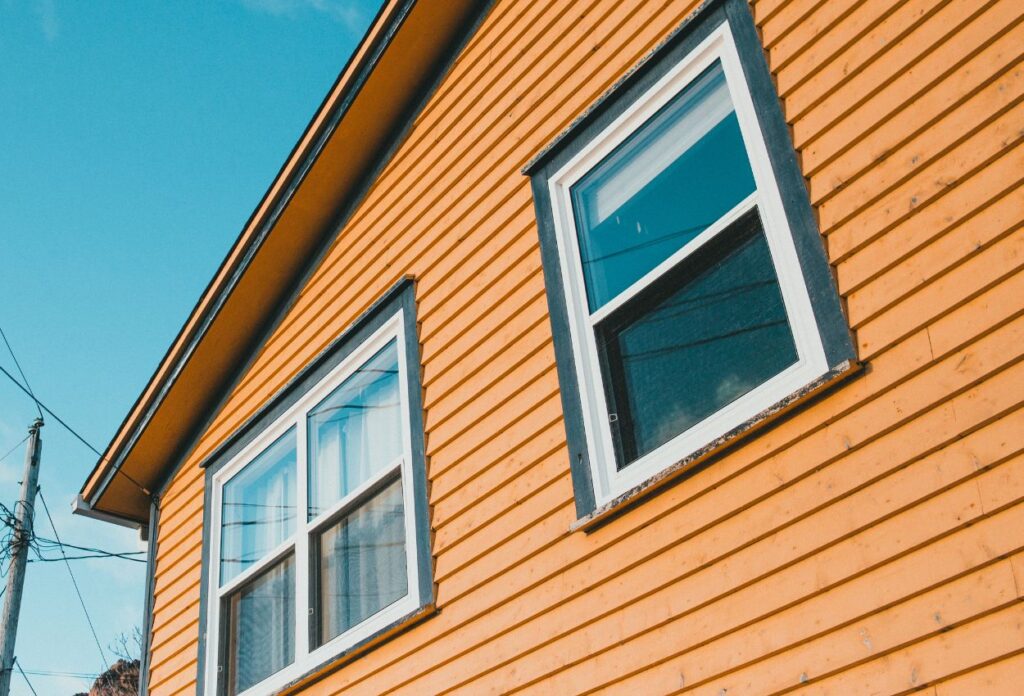
For homeowners who appreciate natural beauty and rustic aesthetics, wood siding can be a good option.
You can find wood siding in various types, including cedar, redwood, pine, and fir. Wood siding brings warmth and character that synthetic materials simply can’t match.
Pine tends to be the most affordable wood siding option, while cedar and redwood cost more because of their natural resistance to insects and decay.
All wood siding provides natural insulation, which helps regulate temperatures inside your home.
What Are The Pros Of Wood Siding?
One of the biggest benefits of wood siding is its versatility in appearance. You can stain wood to highlight its natural grain patterns or paint it in virtually any color.
If you ever want to change your home’s look, wood can be refinished rather than replaced.
What Are The Cons Of Wood Siding?
Wood requires more maintenance than many synthetic options. Based on your area’s weather and the type of wood, you may need to stain or paint every few years to protect it from moisture damage.
Wood siding materials are susceptible to insect infestation, particularly termites, and can rot if not properly maintained. Despite these challenges, when properly maintained, wood siding can last for decades.
#3 Metal Siding
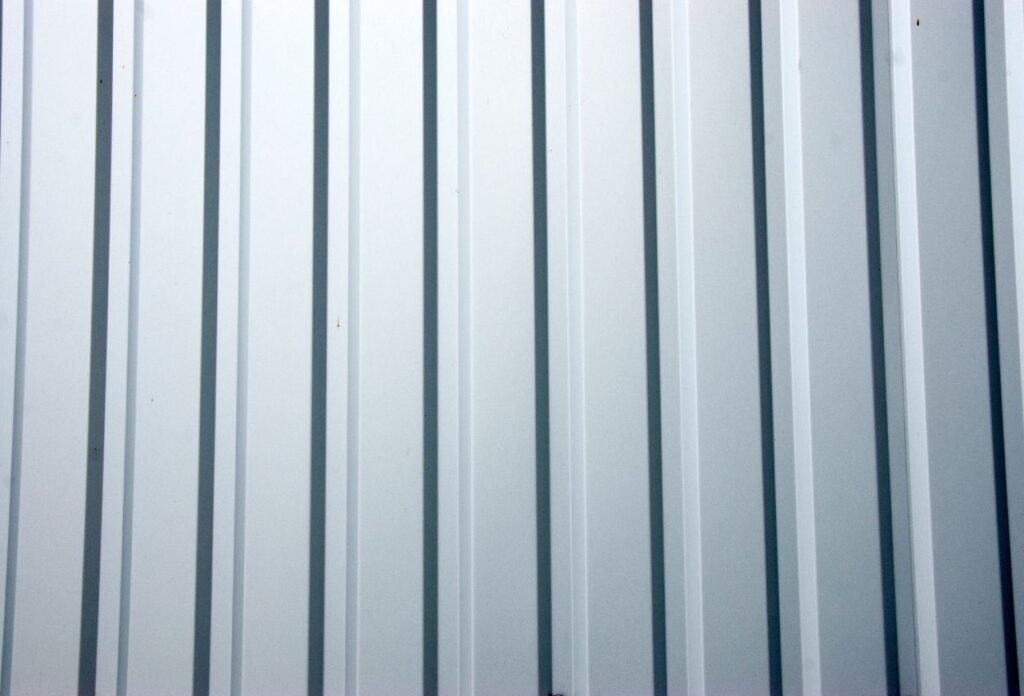
Metal siding, once primarily used for commercial buildings, has gained popularity in residential applications because of its durability and modern appearance. Common metals used for making this siding are aluminum, steel, copper, and zinc.
What Are The Pros Of Metal Siding?
One of the greatest strengths of metal siding is its longevity and minimal maintenance requirements.
It doesn’t rot, warp, or crack like some other materials, and it stands up exceptionally well to harsh weather conditions. Metal siding is also completely resistant to insect damage, which eliminates your concerns about termites or other wood-boring pests.
From an environmental perspective, metal siding offers significant benefits. Most metal siding contains recycled content and is recyclable again at the end of its useful life. Many metal siding options also reflect solar radiation, potentially decreasing cooling costs during the summer months.
Also, you can pair this popular siding type with various types of roofing materials, including shingles, tiles, or even a metal roof. Factory finishes of metal siding can last for decades with minimal fading or deterioration.
What Are The Cons Of Metal Siding?
The downsides of metal siding include potential denting (particularly with aluminum) and the possibility of rust with certain steel products if the protective coating gets damaged.
However, modern finishes have largely addressed these concerns, making metal a popular choice for homeowners.
#4 Brick Siding
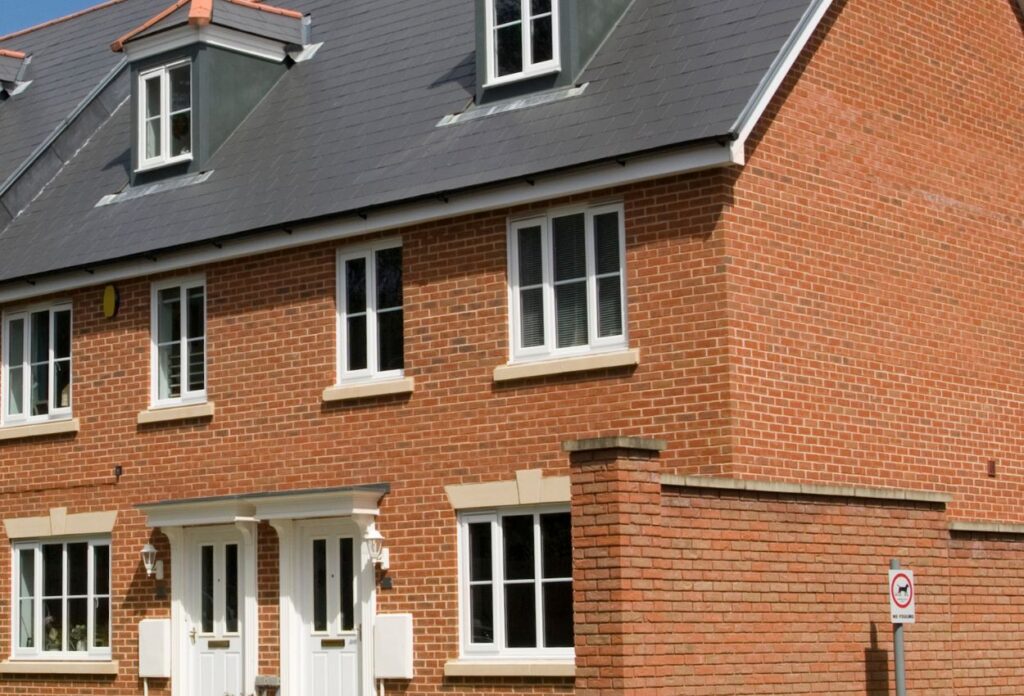
Brick siding is made from clay and shale that’s fired at high temperatures, and it provides a colonial and classic appearance to your property. Dark color roofs complement brick siding very well.
What Are The Pros Of Brick Siding?
The durability of brick siding is a factor that many homeowners appreciate. Properly installed brick siding can last 100 years or more with simple maintenance. It withstands harsh climatic conditions, resists fire, and never needs painting or finishing.
Brick siding also provides pretty nice insulation, which helps maintain comfortable indoor temperatures. Beyond its practical benefits, brick siding also adds value to your home because of its strength and long lifespan.
What Are The Cons Of Brick Siding?
The primary drawbacks of brick siding are its high initial cost and installation complexity.
Brick requires professional installation by skilled individuals, and this makes it one of the more expensive siding options initially.
Over time, the mortar between bricks may require repointing (replacement) to maintain structural integrity, though this is generally only necessary after many years.
Quick Tip!
If you are looking for an affordable alternative to brick siding, you can consider modern brick veneer siding.
These thin slices of real brick are installed on your home’s exterior, providing an authentic brick appearance with simpler installation.
#5 Stone Siding
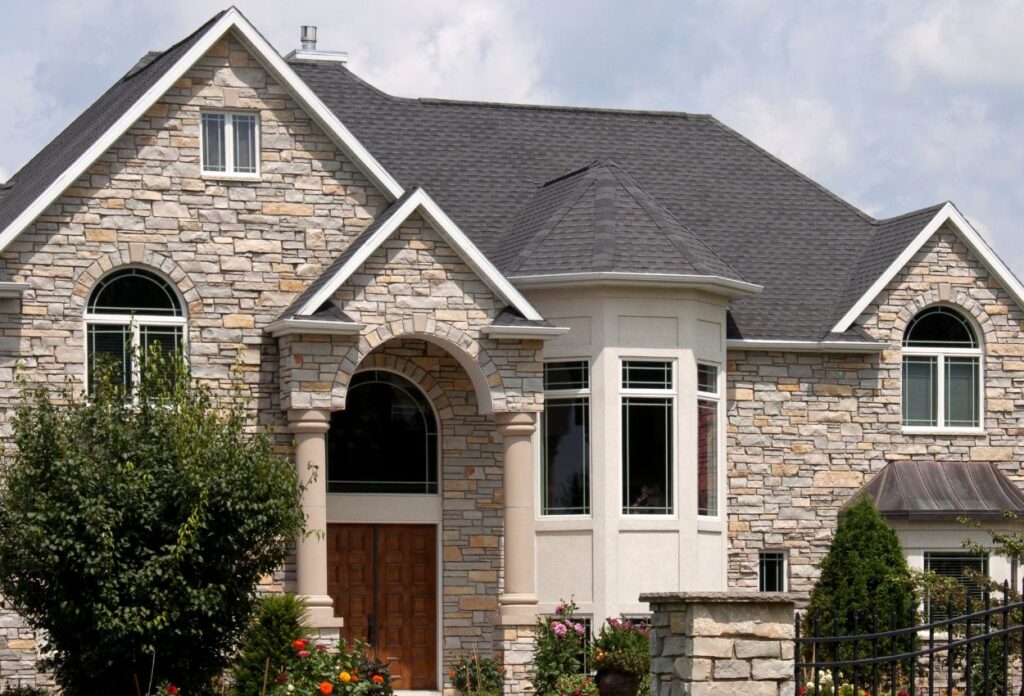
Natural stone represents one of the most permanent siding materials available. Whether using granite, limestone, slate, or other natural stone varieties, this siding option provides impressive durability and natural beauty.
What Are The Pros Of Natural Stone Siding?
Like brick, stone siding can last for generations with simple maintenance. It provides great insulation, which helps regulate indoor temperatures throughout changing seasons.
Stone is completely fireproof and impervious to pests, rot, and most forms of deterioration.
Each stone installation is entirely different, with natural variations in color, texture, and pattern, creating a completely unique appearance to your property. This makes homes with stone siding highly desirable and valuable in the real estate market.
What Are The Cons Of Natural Stone Siding?
The challenges of natural stone siding include its significant weight, which may require additional structural support, and its high cost for both materials and specialized installation.
Full-stone siding represents one of the most expensive exterior options available.
Quick Tip!
For homeowners who love the stone look but need to work within budget constraints, stone veneer offers a more accessible alternative. These manufactured or natural stone panels provide the appearance of full stone with less weight and lower installation costs.
Important Note: Remember that using veneer, whether in brick or stone siding, will not provide the same durability and performance as actual brick or stone siding.
How To Choose The Right Type Of Siding For Your Home
You need to consider some important things when choosing the right type of siding for your home.
👉 Consider your local climate first. For areas with extreme temperatures, fiber cement or insulated vinyl work well. In coastal regions, choose moisture-resistant materials like vinyl.
👉 Balance your budget between upfront costs and long-term maintenance. Vinyl and metal cost less initially and require minimal upkeep, while wood needs regular maintenance.
👉 Assess how much maintenance you’re willing to do. Wood requires regular refinishing, while vinyl, fiber cement, and metal mainly need occasional cleaning.
👉 Match siding to your home’s style. Traditional homes look best with wood or brick, while contemporary designs suit metal or fiber cement. Consider neighborhood norms for resale value.
👉 For energy efficiency, look at insulated options like vinyl or fiber cement that reduce utility bills.
👉 If sustainability matters to you, consider responsibly sourced wood, recycled metal, or long-lasting fiber cement.
👉 Think about your long-term plans. For homeowners selling soon, choose broadly appealing materials like vinyl. For your forever home, premium materials like brick might be worth the investment.
By considering these factors and your property’s needs, you’ll find siding that protects your home while matching your style and priorities.
Get Professional Siding Installation In Oklahoma
At Capital Roofing, we understand that choosing the right siding is an important decision. We provide high-quality siding services in Claremore and the surrounding areas of Oklahoma
Our experienced team is always available to help you evaluate your options and make the best choice for your specific situation. For a no-obligation discussion and professional installation, call us today at (918) 260-4075.
